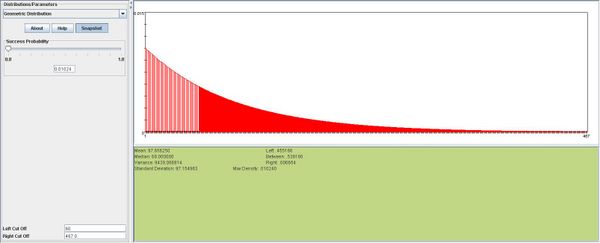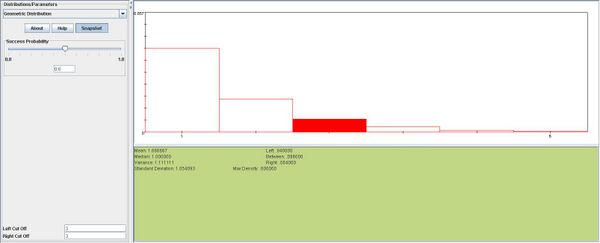SOCR EduMaterials Activities Discrete Probability examples
From Socr
- Description: You can access the applets for the distributions at http://www.socr.ucla.edu/htmls/SOCR_Distributions.html .
- Example 1:
Find the probability that 3 out of 8 plants will survive a frost, given that any such plant will survive a frost with probability of 0.30. Also, find the probability that at least 1 out of 8 will survive a frost. What is the expected value and standard deviation of the number of plants that survive the frost?
- Answer:
 ,
, 



Below you can see SOCR snapshots for this example:
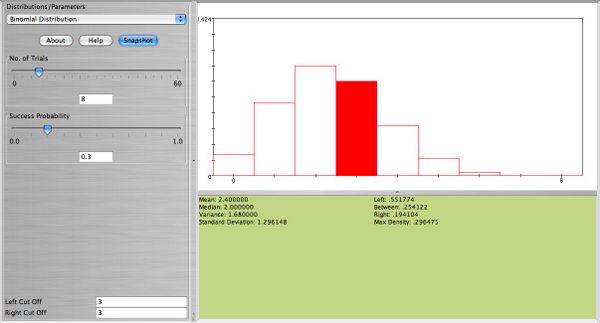
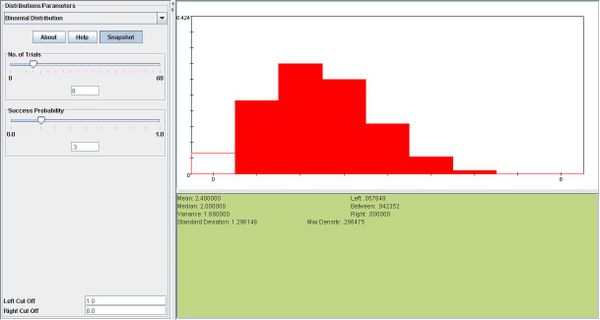
- Example 2:
If the probabilities of having a male or female offspring are both 0.50, find the probability that a familiy's fifth child is their first son.
- Answer:
- P(X = 5) = 0.505 = 0.03125
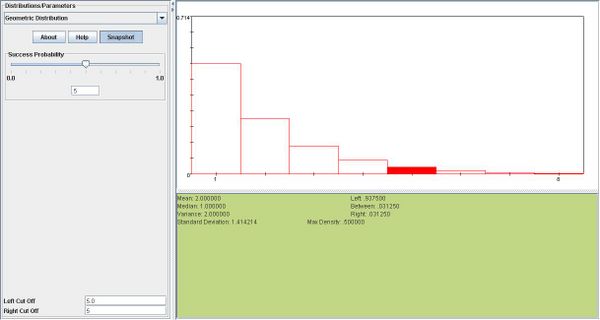
- Example 3:
A complex electronic system is built with a certain number of backup components in its subsystem. One subsystem has 4 identical components, each with probability of 0.20 of failing in less than 1000 hours. The subsystem will operate if at least 2 of the 4 components are operating. Assume the components operate independently.
- Answer:
- a. Find the probability that exactly 2 of the 4 components last longer than 1000 hours.
- b. Find the probability that the subsystem operates longer than 1000 hours.
- a.
 ,
, 
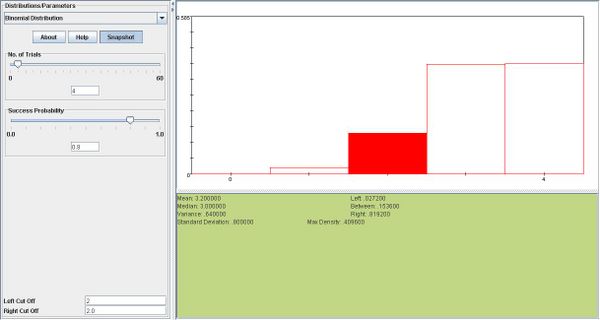
- b.

- b.
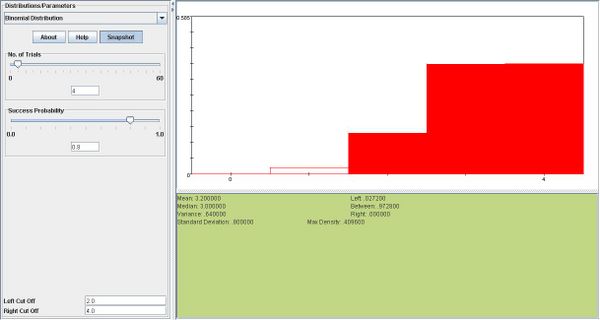
- Example 4:
- P(X = 5) = 0.740.3 = 0.07203 where X represents the number of trials.
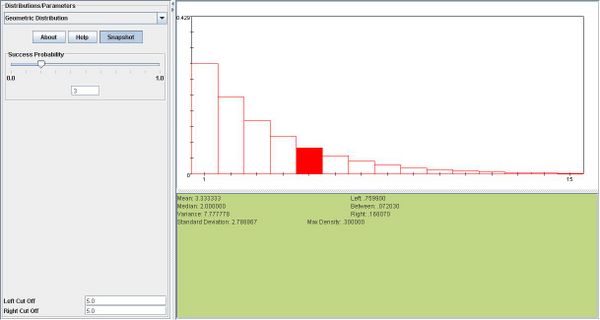
- Example 5:

- Example 6:
- a.

- a.
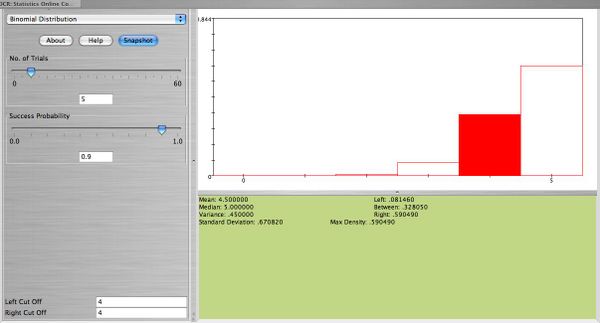
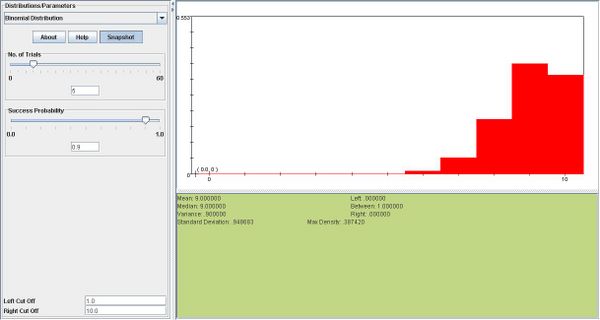
- b. P(X = 0) = .001,0.001 = 0.1nn = 3.
- In the first snapshot below, where
 which is too small. In the second snapshot, we can see that when n is increased to 3,
which is too small. In the second snapshot, we can see that when n is increased to 3,  increases to nearly 1.
increases to nearly 1.
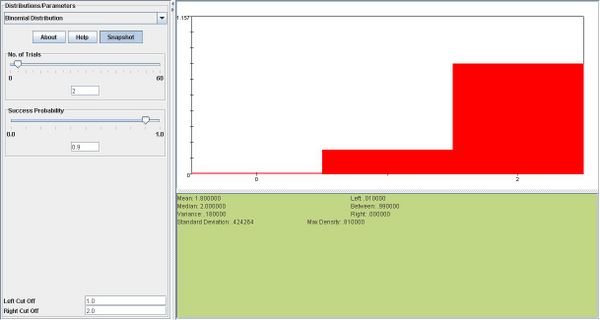
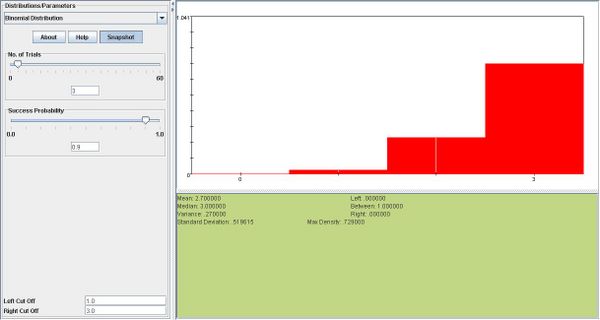
- Example 7:
Construct a probability histogram for the binomial probability distribution for each of the following: n=5,p=0.1, n=5,p=0.5, m=5,n=0.9. What do you observe? Explain.
- Answer:
We observe that if p=0.5 the distribution resembles the normal distribution, with mean np = 0.25. Values above and below the mean are distributed symmetrically around the mean. Also, the probability histograms for p=0.1 and p=0.9 are mirror images of each other.
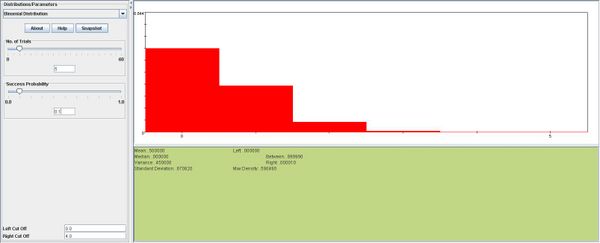
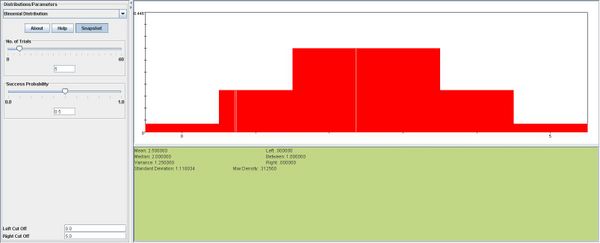
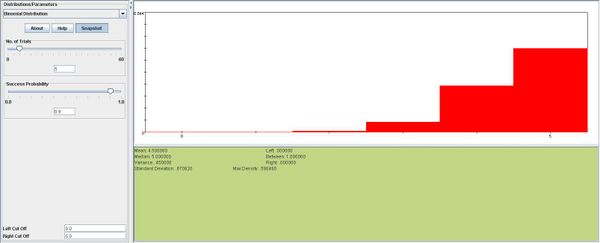
- Example 8:
On a population of consumers, 60% prefer a certain brand of ice cream. If consumers are randomly selected,
- a. what is the probability that exactly 3 people have to be interviewed to encounter the first consumer who prefers this brand of ice cream?
- b. what is the probability that at least 3 people have to be interviewed to encounter the first consumer who prefers this brand of ice cream?
- Answer:

- Now we subtract this from 1 to find the complement, which is the event that at least 3 people WILL have to be interviewed to find the first case:
1 − 0.84 = 0.16
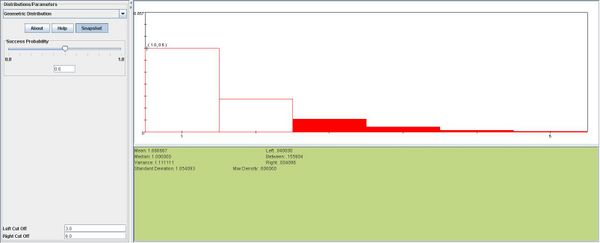
- Example 9:
The alpha marketing research company employs consumer panels to explore preferences
- Answer:
- a.
 ,
, 
- a.
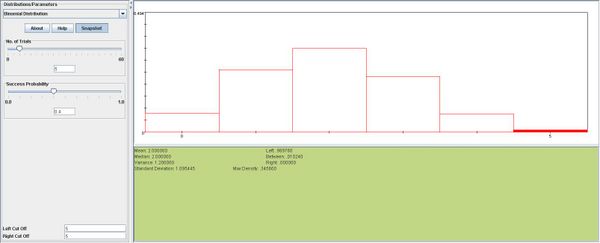
- b. In this part we will look at every group of 5 people as one unit. We will denote success as the event that all 5 people in a group prefer the new product, and failure as the event that at least one person in a group does not prefer the new product. Therefore, p = 0.01024. So,
P(X = 60) = (1 − .01024)60 = 53.9% Below you can see a SOCR snapshot for this example:
